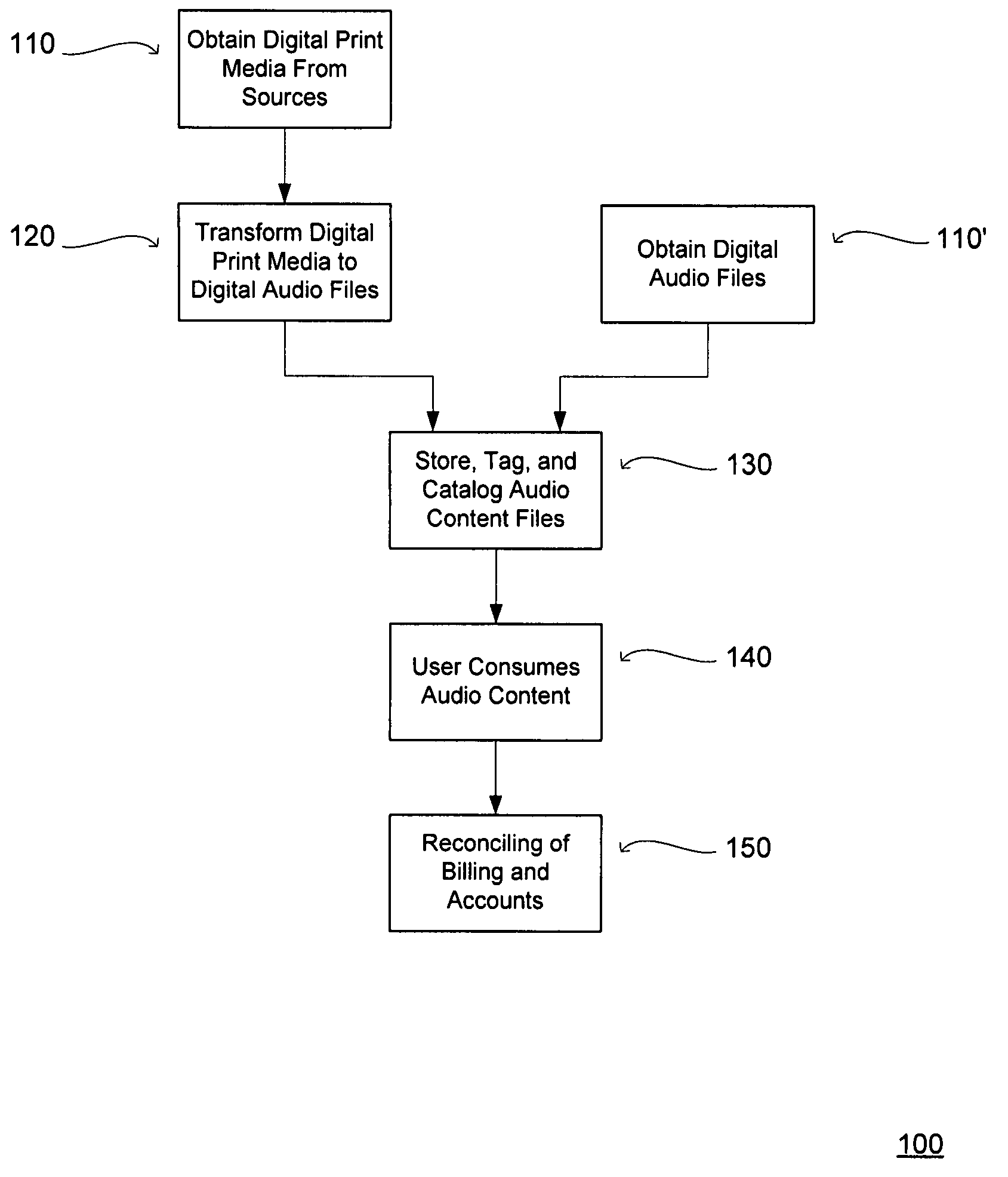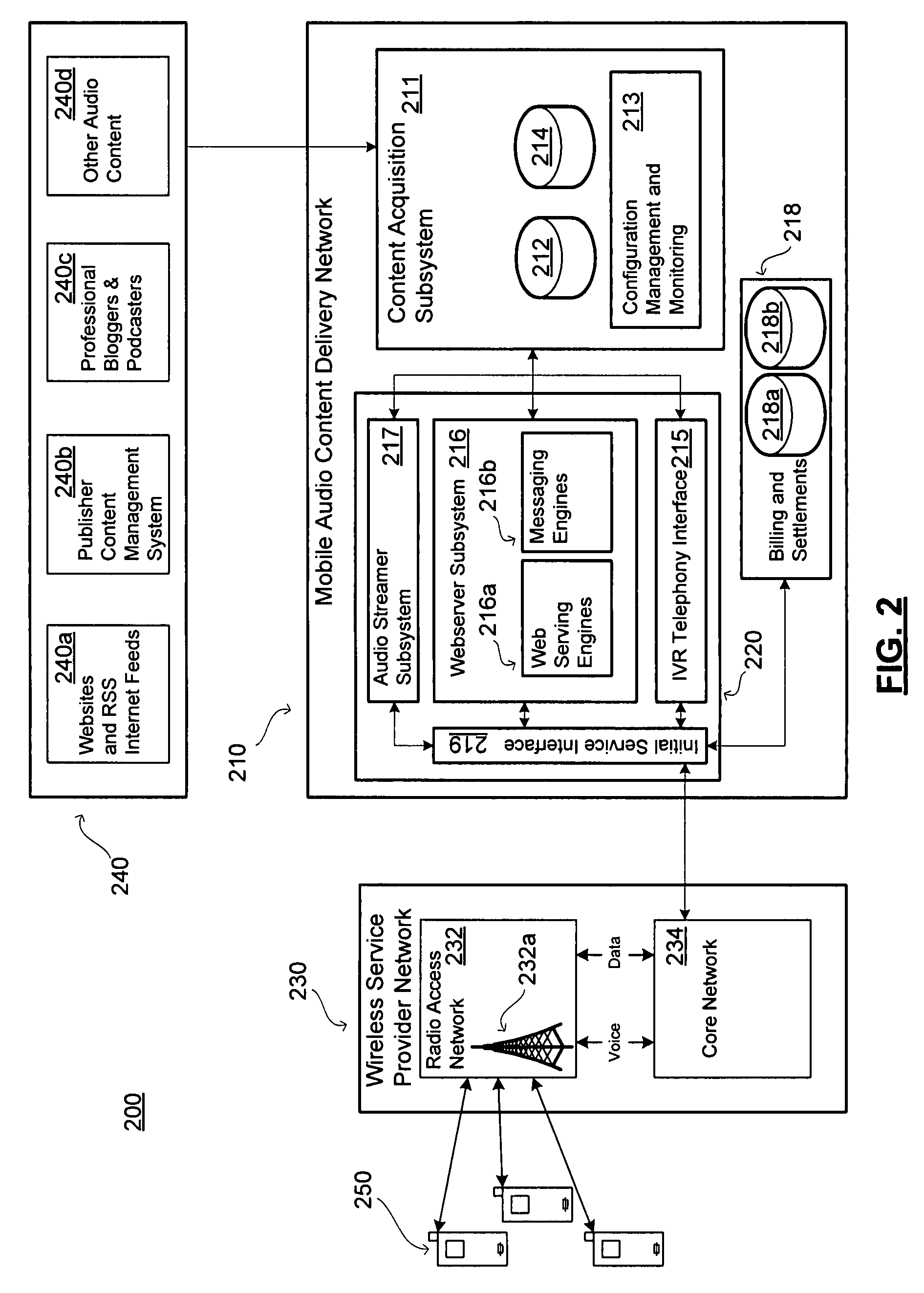Mobile audio content delivery system
a mobile audio and content technology, applied in the field of mobile audio content delivery system, can solve the problems of not having high-quality platforms that enable such publishers to convert such content for audio consumption, the readership of newspapers and magazines has shown a continued decline, and the majority of publishers simply cannot, or otherwise have not demonstrated the technical expertise, resources, or desire to build the infrastructur
- Summary
- Abstract
- Description
- Claims
- Application Information
AI Technical Summary
Benefits of technology
Problems solved by technology
Method used
Image
Examples
Embodiment Construction
[0031]A first aspect of the present invention includes a process 100 for developing and delivering mobile-capable audio content to subscriber consumers using a mobile audio content delivery (“MACD”) system of the present invention. The mobile-capable audio content delivery process 100 can be conceptualized as first having the MACD system obtain print media in various digital forms from content producers at step 110. Next, at step 120, the content is transformed from print digital media into a synthesized spoken audio recorded in a digital media format. Preferably, the majority and / or all of the content in print digital format is converted via electronic TTS technologies that provide automated simulations of human speaking voices reading the digital print media. Optionally, of course, real-life celebrity or other syndicated readers can alternatively be utilized to record readings of certain print media into an audio file. Understandably, however, the celebrity or syndicated readers w...
PUM
 Login to View More
Login to View More Abstract
Description
Claims
Application Information
 Login to View More
Login to View More - R&D
- Intellectual Property
- Life Sciences
- Materials
- Tech Scout
- Unparalleled Data Quality
- Higher Quality Content
- 60% Fewer Hallucinations
Browse by: Latest US Patents, China's latest patents, Technical Efficacy Thesaurus, Application Domain, Technology Topic, Popular Technical Reports.
© 2025 PatSnap. All rights reserved.Legal|Privacy policy|Modern Slavery Act Transparency Statement|Sitemap|About US| Contact US: help@patsnap.com



